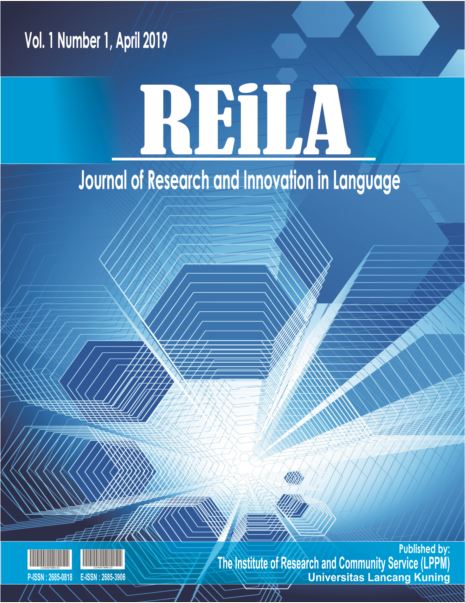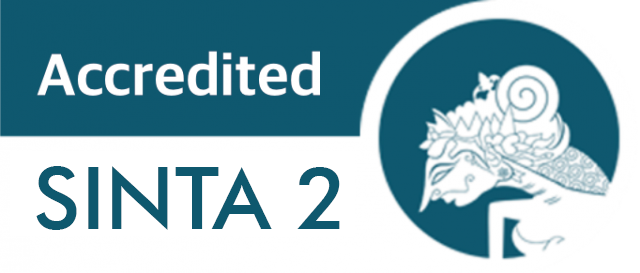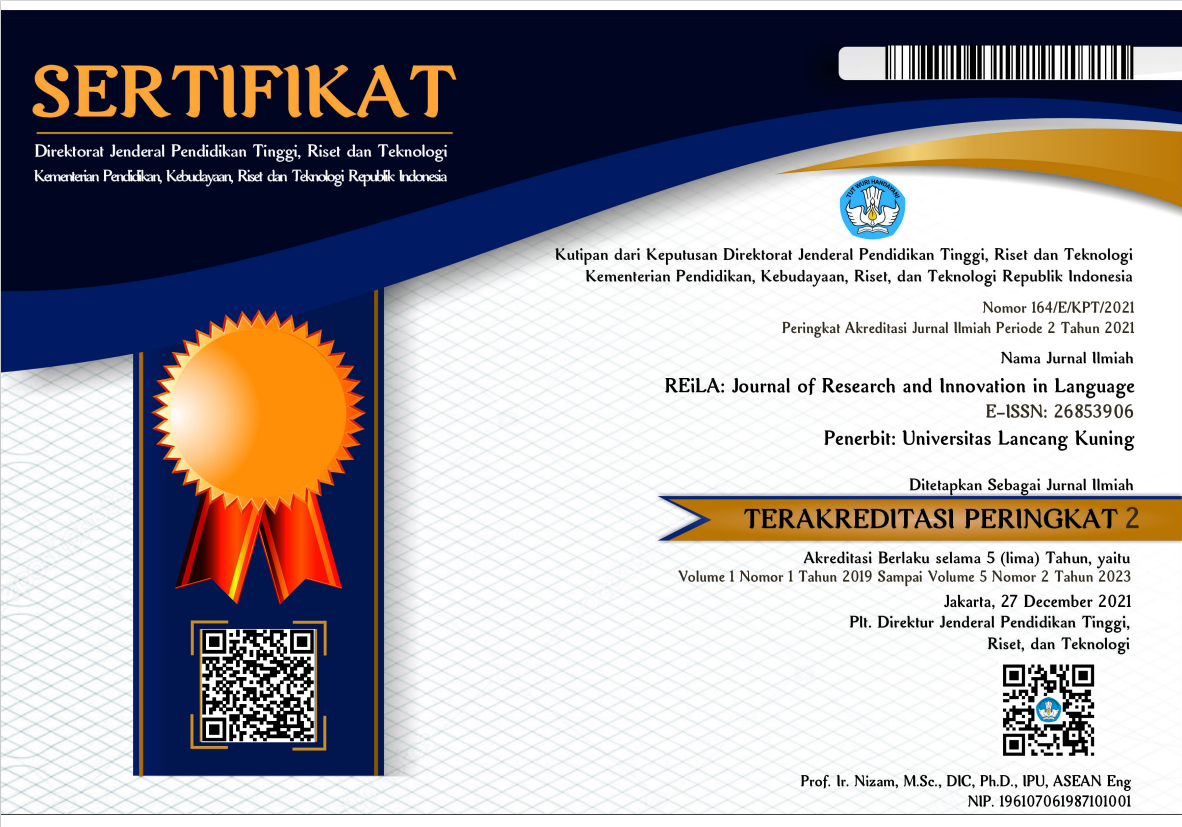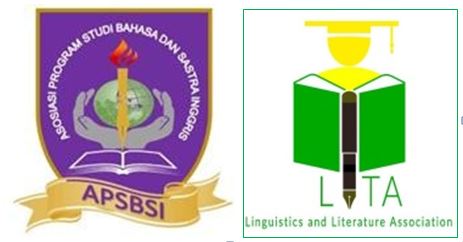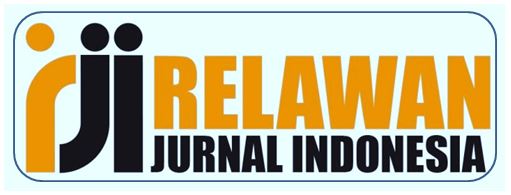Exploring Critical Discourse Analysis’s Renowned Studies: Seeking for Aims and Approaches
Abstract
This paper is trying hard to linked all its resources the study conducted by renowned researchers which discuss about Introduction to Critical Discourse Analysis (CDA) where includes the definitions, the manner to do Critical Discourse analysis guided by the established framework. Based on the theories of Michel Foucault, “discourse analysis is focusing on power of relationships in society as expressed by means of language and practices” this study puts its stand of viewpoint. Besides, there are several renowned studies to help understand the principle e.g.,, aims and approaches of CDA. This study believed and stick to the Foucauldian discourse analysis look at how the figures used language to propose their power dominance, and request obedience and honor from those subordinate to them which the are five steps are recommended based on the identification of rules in using "Foucauldian discourse analysis". However this study also still a high admiration to others scholars aims and approaches used e.g,. van Dijk, Wodak and Faiclough.
Downloads
References
Bloomfield, L. (1943). Meaning. Monatshefte fur Deutschen Unterricht, 35, 101-106.
Bloomfield, L. (1949). Linguistic aspects of science. International encyclopedia of united science I /4. Chicago: University of Chicago Press.
Boden, D., & Zimmerman, D. H. (Eds.). (1991). Talk and social structure: Studies in ethnomethodology and conversation analysis. Univ of California Press.
Bull, T., & Swan, T. (Eds.). (1992). Language, sex, and society. Mouton de Gruyter..
Chilton, P. A. (1985). Language and the nuclear arms debate: Nukespeak today. Pinter Pub Ltd.
De Beaugrande, R. (1991). Linguistic theory : the discourse of fundamental works. London: Group ltd.
Drew, P., & Heritage, J. (1992). Talk at work: Interaction in institutional settings. Cambridge Univ Pr.
Fairclough, N. (1989). Language and Power‖ Longman.
Firth, J. R. (1957a). Papers in linguistics 1934 – 1951. London: OUP.
Fisher, S., & Todd, A. D. (Eds.). (1986). Discourse and institutional authority: Medicine, education, and law (Vol. 19). Praeger Pub Text.
Foucault, M. (1980). Power/knowledge: Selected interviews and other writings, 1972-1977. Pantheon.
Fowler, R. (1991). Discourse and Ideology in the Press. Routledge.
Geis, M. L. (2012). The language of politics. Springer Science & Business Media..
Hamuddin, B. (2012). A comparative study of politeness strategies in economic journals (Doctoral dissertation, University of Malaya).
Hamuddin, B. (2015). DISCOURSE ON MEDIA: Bringing Hot News into ELT's Classroom Discussion. Proceedings of ISELT FBS Universitas Negeri Padang, 3, 87-95.
Hamuddin, B. (2016). Using Content Analysis (CA) in Seeking the Opportunities for Alumni of English Department in Newspapers. ELT-Lectura, 3(1).
Hamuddin, B., & Noor, F. N. M. (2015, August). A Closer Look on Politeness Strategies in Malaysian Economic Journal. In 2nd INTERNATIONAL SEMINAR ON LINGUISTICS (p. 52).
Hodge, R., & Kress, G. (1988). Social Semiotics. London: Polity Press.
Hodge, R., & Kress, G. (1993). Language as ideology (Vol. 2). London: Routledge.
Hurford, James., Heasley, Brendan., and Smith, Michael. 2007. Semantics a Course Book. Second ed. New York. Cambridge Press.
Jindal, D.V and Syal, Pushpinder. 2002. An Introduction To Linguistics : Language Grammar and Semantics. New Delhi: Asoke K. Ghosh
Kedar, L. (1987). Power through discourse. Ablex Publishing Corporation.
Kramarae, C., Schulz, M., & O'Barr, W. M. (1984). Language and power. Sage Publications, Inc.
Kridalaksana, Harimukti. 2008. Kamus Linguistik: Introduction to Theoretic Linguistics. Jakarta: PT Gramedia.
Leech, G. 1974. Semantics. New York, U.S.A: Penguin.
Leech, G. 1974. Semantik. Translated by Paina Partana. 2003. Yogyakarta: Pustaka Pelajar.
Leech, Geoffrey. 1981. Semantics The Study of Meaning. Second ed. Great Britain:Penguin Books.
Lexy,, J.Moleong. (2005). Metodologi Penelitian Kualitatif. Bandung : PT. Remaja Rodakarya.
Lyons, J. 1997. Semantics Volume I. Great Britain: University Press, Cambridge.
Mhute, I. et al. 2014. Introduction to General Linguistics II. Harare: ZOU
Mills, S. (2003). Gender and politeness (Vol. 17).
Cambridge University Press.
Moleong, J.L. (2000). Metodologi Penelitian Kualitatif. Bandung : PT. Remaja Rodakarya.
Morley, G, D. 2000. Syntax IN Functional Grammar: An Introduction to Lexicogrammar in systematic Linguistics. New York: Continum.
Mujiyanto, Y. (2017). The verbal politeness of interpersonal utterances resulted from back-translating indonesian texts into english. Indonesian Journal of Applied Linguistics, 6(2), 288-300.
Mutarcim. Veysalli, F. Y. (2013). The bases of Linguistics. Studia Philologica VI. Baku: Mutarjim.
Noor, M. and Mustafa, R and Muhabat, F and Kazemian, B. 2015. The Language of TV Commercials’ Slogans: A Semantic Analysis. Pakistan: University of Gujrat, Punjab. Vol. 1, pp 7-12
Reiter, R. M. (2000). Linguistic politeness in Britain and Uruguay: A contrastive study of requests and apologies (Vol. 83). John Benjamins Publishing.
Sarefah, L. 2008. The Associative Meaning In The Headlines of The Jakarta Post. Unpublished Thesis. The State Islamic University of Malang.
Schegloff, A. E. & Sacks, H. 1974. Opening Up Closing. Dalam J. Baugh dan Jsherzer (Eds.), Language in Use: Reading in Sociolinguistics (hlm.69-99). Englewood Cliffs, New Jersey: Prentice Hall
Scollon, R., & Scollon, S. W. (2001). Intercultural
Communication A Discourse Approach Second Edition. LANGUAGE IN SOCIETY-OXFORD-, 21.
Syal, P. and Jindal, D.V . An Introduction to Linguistics: Language, Grammar and Semantics. New Delhi: Prentice Hall
Terkourafi, M. (2005). An argument for a frame-based approach to politeness. Broadening the horizon of linguistic politeness, 139, 99.
Teun A. Van Dijk (1988). Orwellian Language and the Media. London: Pluto Press
Teun A. Van Dijk (1992). Discourse and Social Change. Oxford: Polity Press.
Teun A. Van Dijk (eds.) (1988). Gender and Discourse: The Power of Talk. Norwood, NJ: Ablex Publishing Company.
Teun A. Van Dijk Bob Hodg, Gunther Kress, and T. Trew. (1979). Language and Control. London: Routledge & Kegan Paul.
Teun A. Van Dijk. (1992). Discourse and Social Change. Oxford: Polity Press.
Teun A. Van Dijk. Critical Discourse Analysis
Teun A. Van Dijk.(eds.) (1988). Gender and Discourse: The Power of Talk. Norwood, NJ: Ablex Publishing Company.
Ullman, S. (1962). Semantics: an introduction to the study of meaning. Oxford: Basil Blackwell
Veysalli, F. Y. (2008). The bases of Structural linguistics II. Studia Philologica II. Baku:
Wang Yuanxin. (2006). Theories of Language and Methodologies of Linguistics. Beijing: Educational Science Publishing House.
Wang, N., Johnson, W. L., & Gratch, J. (2010, June). Facial expressions and politeness effect in foreign language training system. In International Conference on Intelligent Tutoring Systems (pp. 165-173). Springer, Berlin, Heidelberg.
Watts, RJ (2003). Kesopanan . Cambridge University Press.
Weaver, R., & Hybells, S. (2007). Communicating effectively. Boston: McGraw Hill.
Wijayanto, A., Laila, M., Prasetyarini, A., & Susiati, S. (2013). Politeness in Interlanguage Pragmatics of Complaints by Indonesian Learners of English. English Language Teaching, 6(10), 188-201.
Xiong Bin. (2007). American Structural Linguistics and Modern Chinese Grammar Research. Wuhan: Central China Normal University Press.
Yin, Xiujuan. (2008). Probe into Bloomfield’s “Meaning”. Journal of Anhui University of Technology (Social Sciences), 25(4): 84-85, 110.

